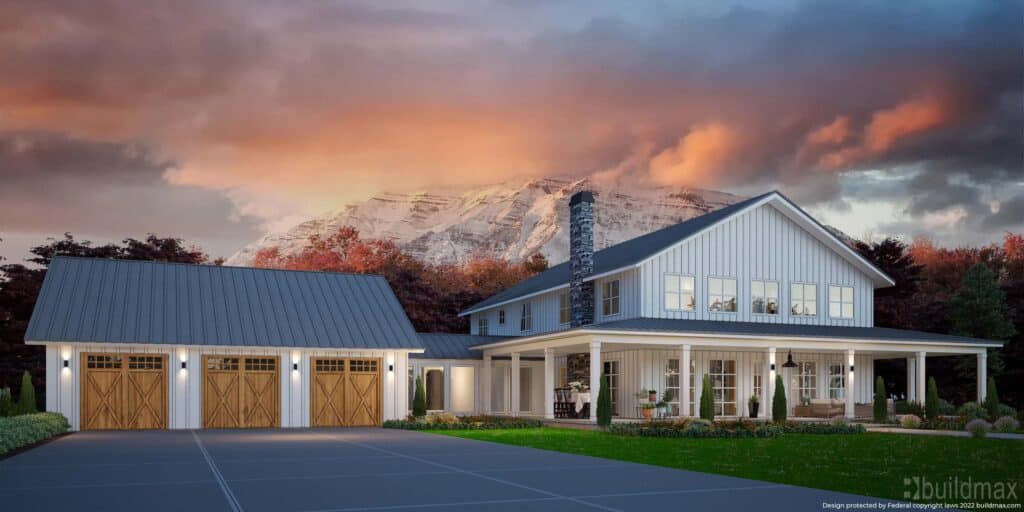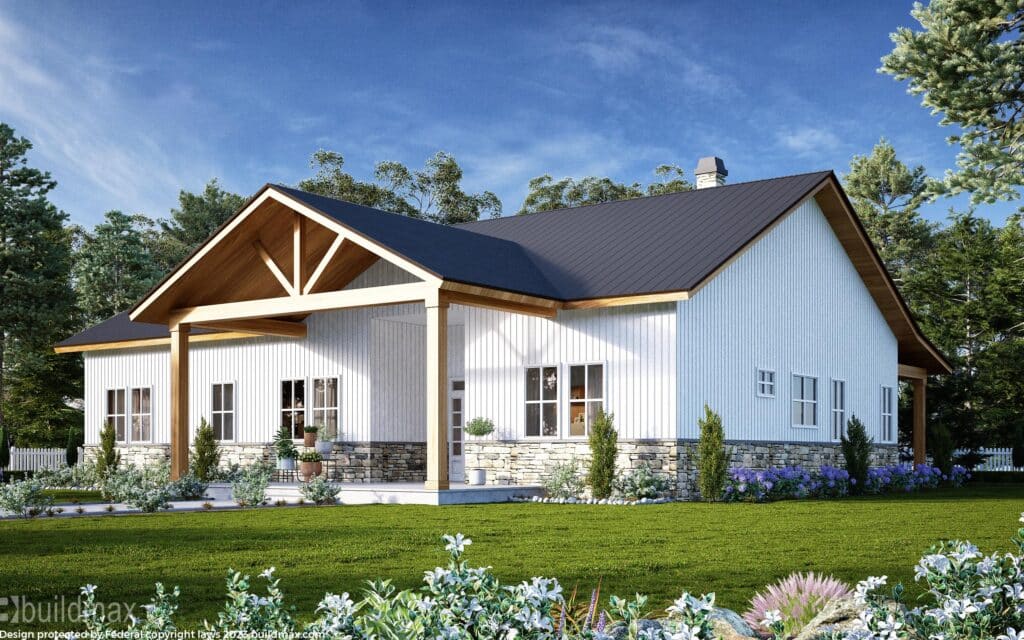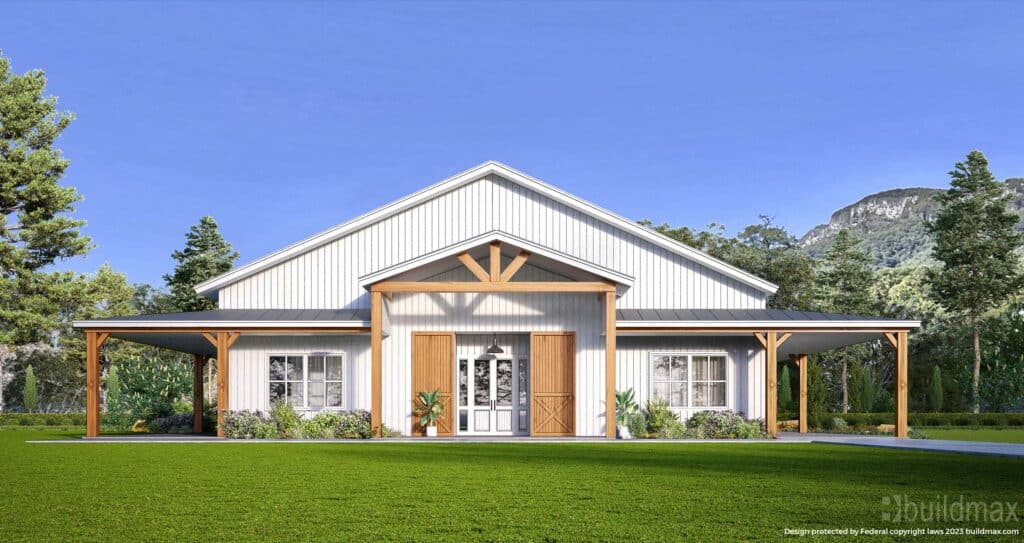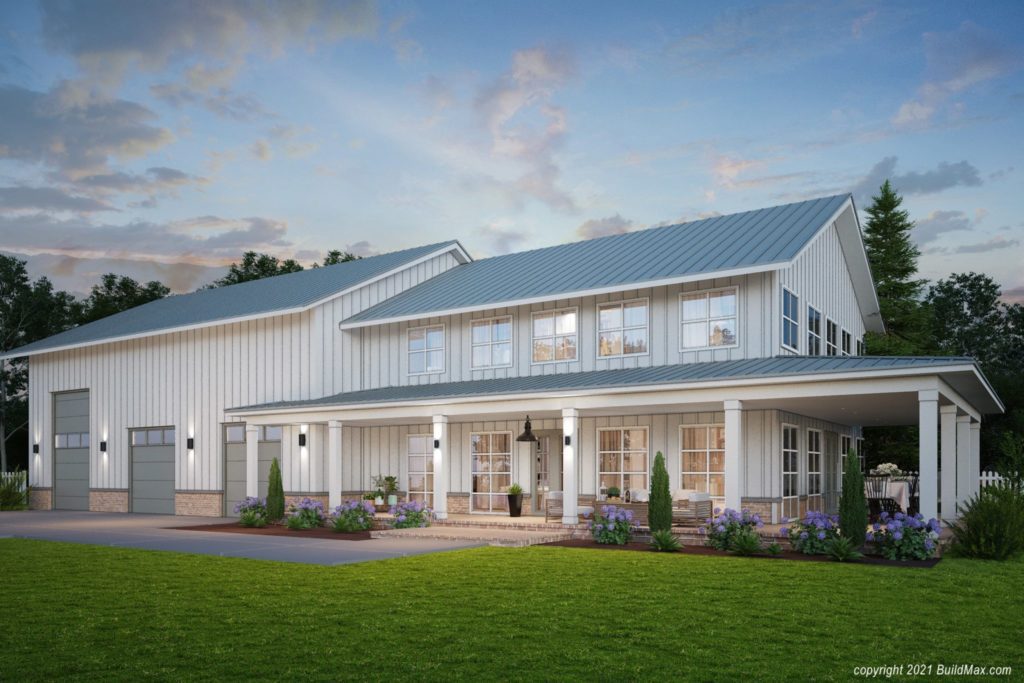Building a barndominium involves many important decisions, including determining the structure’s size, the number of bedrooms, and the floor plan that fits your needs. But one crucial aspect that can be easily overlooked is the insulation of the barndominium.
Barndominiums are frequently made of metal, making them a more straightforward construction choice compared to traditional wooden homes. They also tend to be more robust and durable than typical wooden builds. Nonetheless, insulation remains a vital consideration.
When you construct a barndominium, it’s essential to factor in insulation as a crucial element of your building plan. Insulation will help you maintain a comfortable living environment by regulating the temperature and preventing energy loss. Moreover, considering the insulation during the early stages of construction will save you time, money, and potential discomfort in the long run.
Insulation for Your Barndominium: What You Should Know
If you’re considering building a new barndominium or haven’t yet insulated your existing one, understanding the importance of insulation is crucial. Here’s what you need to know about insulating your barndominium.
While metal buildings can retain heat effectively, making them suitable for cooler climates, they are not well-suited to other regions without proper insulation. Metal is a poor insulator, as it readily conducts heat and cold. During hot months, the sun heats the metal sheeting, causing the interior to become uncomfortably warm and humid. Conversely, as temperatures fall, the metal cools, leading to a cold interior and potential condensation issues.
Insulation plays a vital role in mitigating these challenges. It prevents air transfer and stabilizes indoor temperatures, giving you greater control over your barndominium’s climate.
Insulating your barndominium can also help avoid condensation problems. When warm air from the sun or heating system meets the cold metal sheeting, it can cause condensation to form. Over time, this moisture may harm the foundation or lead to rust.
Beyond regulating temperature and preventing condensation, insulation also serves as a sound barrier. The right type of insulation can reduce outside noise, such as passing cars or pedestrians, creating a quieter living environment.
In conclusion, insulating your barndominium is essential for temperature control, condensation prevention, and noise reduction. It enhances your comfort, protects your investment, and ensures a more enjoyable living experience.
Choosing the Right Insulation for Your Barndominium: What to Know
When insulating a barndominium, you have a range of materials and methods to consider, just like with conventional wooden homes. Some of the most popular insulation options for barndominiums include:
– Batts
– Loose-fill
– Spray foam
– Rigid board
– Vapor barriers
It is essential to understand the benefits and drawbacks of each option before making a decision.
Batt Insulation
Batt insulation, also known as blanket insulation, is a common choice for many homes. It is an affordable and straightforward option to install. Batt insulation is available in rolls that can be cut to fit the wall cavities.
One of the main advantages of batt insulation is its cost-effectiveness. It comes in a range of thicknesses, which can influence its ability to resist heat flow, measured by the insulation’s “R-value.”
Typically, batt insulation has an R-value between 2.9 and 3.8. This value is similar to that of open-cell foam and slightly lower than that of loose-fill insulation. The R-value indicates the insulation’s effectiveness at slowing the flow of heat, with higher R-values indicating better insulation performance.
In conclusion, batt insulation is an accessible and cost-effective option for insulating your barndominium, with a performance comparable to some other insulation types. Make sure to consider factors such as the climate and your specific needs when selecting the appropriate insulation for your barndominium.
Loose-Fill Insulation
Loose-fill insulation, also known as blown-in insulation, consists of loose fibers or pellets that are blown into the spaces between the walls. These fibers can be made of materials like rock wool, fiberglass, or recycled shredded newspaper.
Blown-in insulation is commonly applied through small holes in either the exterior or interior walls, making it a convenient option for existing barndominiums. For instance, if you’ve already built your barndominium without insulation, you wouldn’t need to tear down interior walls to install blanket insulation.
While blown-in insulation is more costly than some other options, it offers superior coverage. The loose fibers can reach every corner and crevice of the wall cavity, providing a thorough seal. However, you may need to add a separate radiant barrier, which blocks and reflects heat, helping keep your home cool. This barrier typically consists of a reflective material like foil. In contrast, some other insulation types, such as blanket insulation, may already have a thin radiant barrier attached to the material.
Spray Foam Insulation
Spray foam insulation shares many benefits with blown-in insulation, including the ability to be installed through holes in the wall cavities, making it an excellent option for adding insulation to an existing barndominium. Yet, spray foam offers even better coverage.
Spray foam insulation involves combining a polymer with a foaming agent and spraying it into wall cavities. A liquid is then added, causing the mixture to expand. As it dries, the mixture forms a solid mass with air-filled cells.
There are two main types of spray foam insulation: open-cell and closed-cell. Open-cell foam has cells that are fully encapsulated, resulting in a softer, more flexible foam. In contrast, closed-cell foam has cells that are pressed together to prevent moisture and air from entering.
Closed-cell foam is often the preferred choice for metal buildings, as it expands less and provides a vapor barrier, making it an excellent option for barndominiums.
Rigid Fiber Board Insulation
Rigid fiber board insulation consists of sturdy boards made from materials such as polyurethane or fiberglass. These boards are cut to fit within wall cavities and offer a straightforward installation process during the construction of a barndominium. Their rigidity also makes them well-suited for insulating flat roofs.
One of the key benefits of using rigid board insulation is its enhanced soundproofing capabilities. The stiff nature of the boards makes them more effective at dampening sound compared to other insulation types.
It is essential to note that, in some regions, building codes may mandate the addition of a flame-retardant layer over the insulation. The most commonly used option for this purpose is the installation of a ½-inch gypsum board over the insulation.
Barndominium Insulation Cost
The cost of insulating a barndominium varies depending on factors such as the size of the property, the chosen insulation type, and the installation method. On average, the cost of insulation materials for a barndominium ranges from $1 to $5 per square foot.
For instance, if you have a 1,500 square-foot barndominium, you can expect to spend approximately $1,500 to $7,500 on insulation materials alone. Blanket insulation and rigid boards are among the more affordable options. On the other hand, spray foam and blown-in insulation tend to be more expensive but offer better coverage and are easier to install in existing barndominiums.
Insulating Your Barndominium or Metal Building: A Step-by-Step Guide
Choose the Right Insulation
Start by selecting the appropriate insulation for your metal building. If your home is already constructed, spray foam and blown-in insulation are the easiest options for retrofitting. For new barndominiums, blanket insulation and rigid boards are simpler, particularly if you’re handling the construction yourself.
Check Local Building Codes
Review the local building codes in your area. Some regions may have requirements for a minimum insulation R-value or necessitate the use of an additional vapor barrier.
Measure the Spaces
Measure the distances between the wall studs for walls, and between joists for attics and floors. Multiply the total measurements by the ceiling height to estimate the amount of insulation needed for your project.
Inspect the Plumbing
Before installing insulation, inspect the plumbing. If pipes run through the wall cavities or floors where you plan to install insulation, consider adding foam pipe sleeves to guard against condensation.
Seal Gaps and Cracks
Seal any gaps between fixtures, joists, and studs. Use caulk for smaller spaces. This step may not be necessary if you are using a do-it-yourself spray foam kit, as spray foam itself will fill gaps and cracks.
Begin with the Attic
Start installing insulation from the attic and work your way down. The attic is likely to be the most labor-intensive area, as it may involve fitting plumbing or electrical lines with foam sleeves.
Cut and Fit Insulation
For blanket insulation or rigid boards, cut them to fit between the wall cavities. Then, install the insulation before putting up the drywall. If using spray foam or blown-in insulation, follow the instructions that come with the insulation materials. These methods usually require access to the wall cavity post-wall construction.
Follow Installation Guidelines
Whether you’re using blanket insulation, rigid boards, spray foam, or blown-in insulation, always follow the manufacturer’s installation guidelines for the best results.
By following these steps and adhering to local building codes, you can effectively insulate your barndominium or metal building, enhancing its energy efficiency, comfort, and durability.
Final Considerations
Ultimately, for comprehensive coverage and optimal resistance against heat, moisture, and fire, closed-cell spray foam insulation is a highly recommended choice for your barndominium. However, if you’re seeking a more budget-friendly option for new barndominium construction, you might want to consider blanket insulation or rigid boards.
In addition to these recommendations, it’s advisable to engage the services of a seasoned contractor. Their expertise can be invaluable in helping you weigh the different options and ensuring a proper insulation installation.















